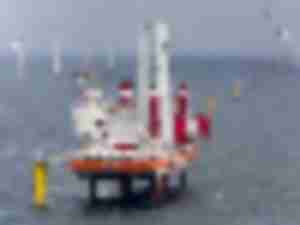Why robotics are stuck in neutral without the right intelligent human labor management solution
Throughout the industrial world and across every continent, businesses are making significant investments in robotics and automation. According to the McKinsey Global Industrial Robotics Survey, automated systems will account for 25% of capital spending over the next five years1. Many of these businesses believe robotics-driven automation systems will drive major benefits in output quality, efficiency, and uptime.
Why an SMB should use a supply chain management system
Small to medium-sized businesses face many of the same challenges that large enterprises face within their supply chains: Labor shortages, rising raw material costs, supply shortages, higher transportation costs, and weather-related disruptions are just a few.
U.S. faces “many gaps” in manufacturing offshore wind farms
There are “many gaps in the U.S. manufacturing sector and in its infrastructure and planning activities which pose a significant barrier to the development of offshore wind,” according to a co-author of the recently released U.S. report on wind farm supply chain prospects.
Top four cold chain drivers in 2023
Stakeholders throughout the supply chain understand 2023 will not be like any other year—and this is especially true for the cold chain, both in terms of challenges and opportunities. Offering reliability and predictability, the reefer market continues to grow and has proven to be more resilient in the face of supply chain disruption as the movement of temperature-controlled cargo continues to be prioritized.
Diesel settles down…for now
Prices moderate as panic buying eases
Port of Muskogee recovers from 2019 floods supported by U.S. infrastructure funding
Both U.S. political parties need to support more infrastructure spending, including for the inland waterways and recognize that barge transportation can provide major cost savings compared to truck and rail, according to Kimbra Scott, port director, Port of Muskogee, Oklahoma.
An Interview with John McCown
John McCown, author of the widely cited McCown Report, is an industry veteran who sees a fundamental shift away from West Coast ports to East Coast and Gulf coast ports where projections indicate that 75% of U.S. trade should be shipped compared to 25% for the West Coast. McCown is the former chairman and CEO of Trailer Bridge, the founder of Blue Alpha Capital where he is working on financing an offshore wind turbine installation vessel. McCown is also Non-Resident Senior Fellow at the Center for Maritime Strategy with the Navy League of the United States where his focus is on the intersection of merchant shipping and maritime commerce with national security.
Port of Long Beach’s Cordero emphasizes zero emissions
Mario Cordero, executive director of Port of Long Beach emphasized the Port’s success in upgrading its terminals toward zero emissions: “Our terminals have accomplished so much and when it comes to our remarkable zero-emission demonstration projects … since our determination in November 2017 to achieve zero emissions.”
The evolution of container chassis provisioning in the US
Significant trends shaping access to resilient, efficient, and environmentally sound chassis provisioning models
U.S. says nearly 50,000 new jobs could be created by offshore wind by 2030
The National Renewable Energy Laboratory (NREL) released a report on January 23rd stating that the U.S. goal of generating 30 Gigawatts (GW) of offshore wind power by 2030 will create nearly 50,000 new American jobs, provided that major upgrades in ports and shipyards are achieved.
© Copyright 1999–2024 American Journal of Transportation. All Rights Reserved










